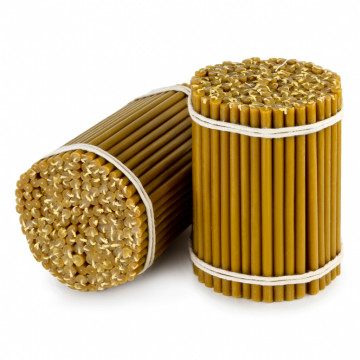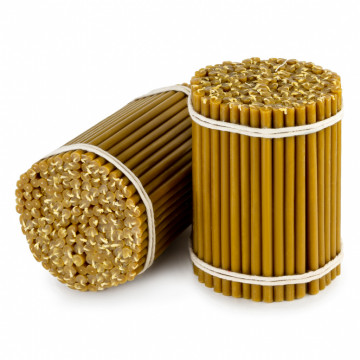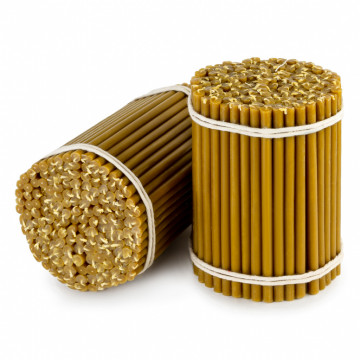All candles used in church services are conventionally called "church candles". The traditional recipe for making them is considered to be the use of beeswax without dyes and additives. Even visually, they differ from the candles available for purchase - a light scent, a matte-yellow shade. The deacon's candle, the tallest and thickest, has a conical tip at the top and a dense wick. It is used during the Liturgy and the reading of the Gospel.
What is the difference between paraffin candles and wax candles?
It is known that in churches, it is preferable to use wax candles rather than paraffin candles. Why is this? Because wax is a natural material created by bees to make honeycombs. Paraffin, on the other hand, is a synthetic substance, the base of which is oil and mixtures of hydrocarbons. To give them a more natural scent, perfume fragrances and chemical wax substitutes are added. The difference between wax and paraffin candles is easy to grasp. The former burn several times longer and do not extinguish until they are completely consumed. And they also differ externally. Natural ones are darker, artificial ones are lighter.
Candles also differ in the following parameters:
- Scent when burning: Only wax candles can boast a warm, honey-like aroma. They are often used at home as natural aromatherapy because the scent they emit is produced by the material itself, not by additives, as in the case of paraffin counterparts.
- Physical properties: When bent, a wax candle retains its shape, while a paraffin one breaks apart. The former are also easily cut with a knife, while the latter crumble under similar pressure.
- Shelf life: Artificial candles are more durable. Wax ones, after some time of use, become covered with a white bloom.
- Cost: It is quite understandable that wax counterparts, being natural elements, are more expensive than their paraffin "siblings".
- Eco-friendliness: The use of paraffin candles in churches, temples, and monasteries is limited - the soot and smoke they produce negatively affect the health of ministers and parishioners, as well as blacken iconostases. This happens because of the composition of artificial candles - Australian resin, which is essentially thickened oil.
If one frequently breathes in the combustion products of paraffin candles, it can lead to headaches, nausea, and dizziness.










